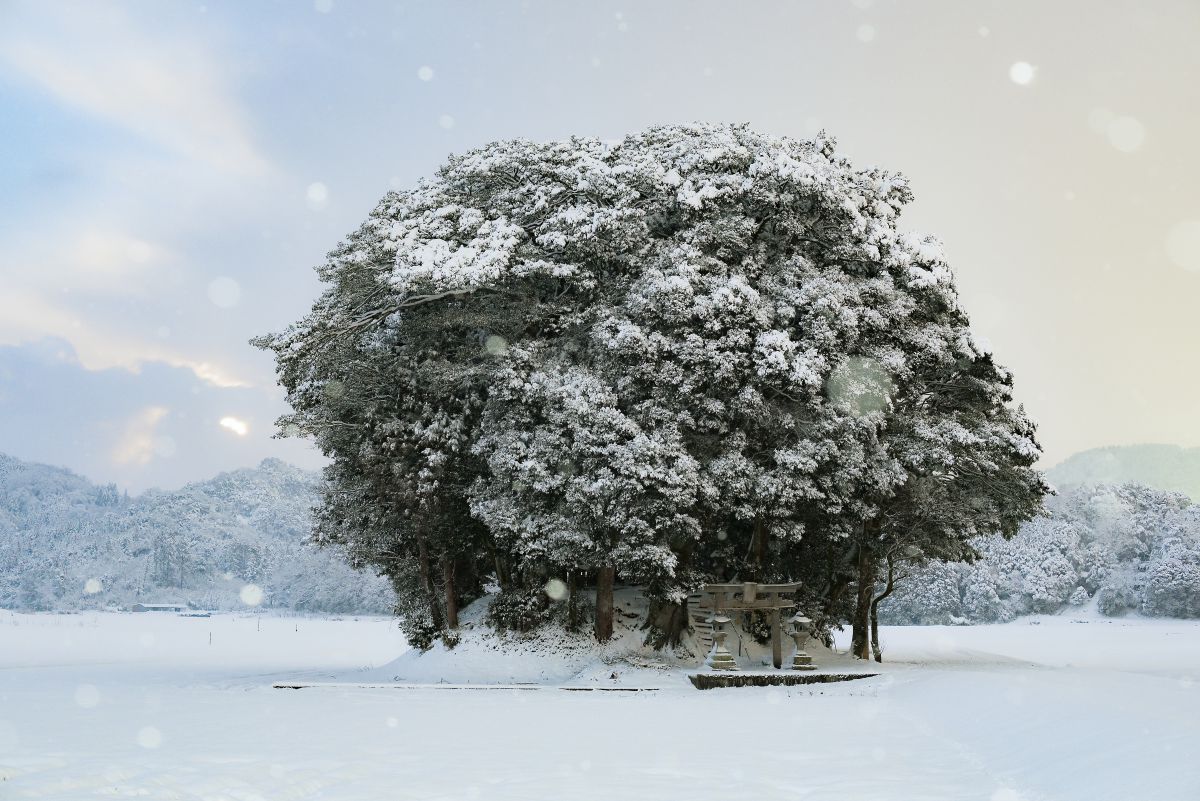Guardian forests (鎮守の森) used to be found in every village in Japan but these days we seldom see them, where the village guardian God manifests. They are usually centered around a small shrine and is as close as possible a remnant of the original forest coverage of the area. 

Guardian forests belonged to the village (or the other way around?) and when charcoal or timber products were harvested it was only supposed to be used for religious festivals or in maintaining shrine buildings. 

They also performed eco services: as forests were cut back to make room for fields Guardian Forests were important "safe islands" for pollinators, beneficial insects, bees etc. and a roosting place for birds that preyed on pests like rodents, grasshoppers etc. Better harvests! 

Many small ones remain inside cities, surrounded by streets and buildings on all sides they can be tricky to spot. Some are large, like the Tadasu-no-mori in Kyoto, which has been left more or less untouched for the last 2000 years. 124,000m², but it used to be much larger. 

Maybe the most famous Guardian Forest in Japan is the Meiji Shrine Forest, 101 years old, a rare example of a new planting.
https://twitter.com/wrathofgnon/status/1280712223137005568?s=20
Another famous example might be found in the film My Neighbor Totoro. I do not know if Totoro is a god or not but I think the spot where he lives could be an old Guardian Forest. 

I think modernity and greed did a number on Japan's tens of thousands of Guardian Forests. Today so little remain untouched, but the worst is over. People today appreciate and value these remnant forest islands like never before. 

• • •
Missing some Tweet in this thread? You can try to
force a refresh




































